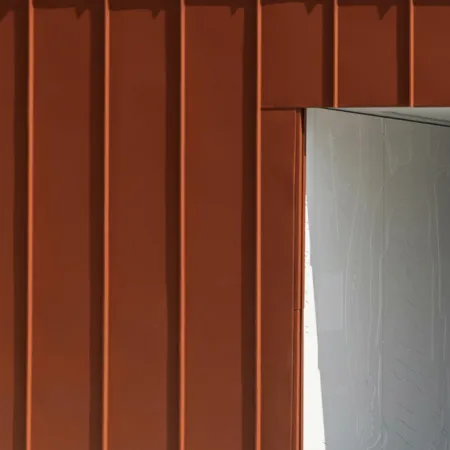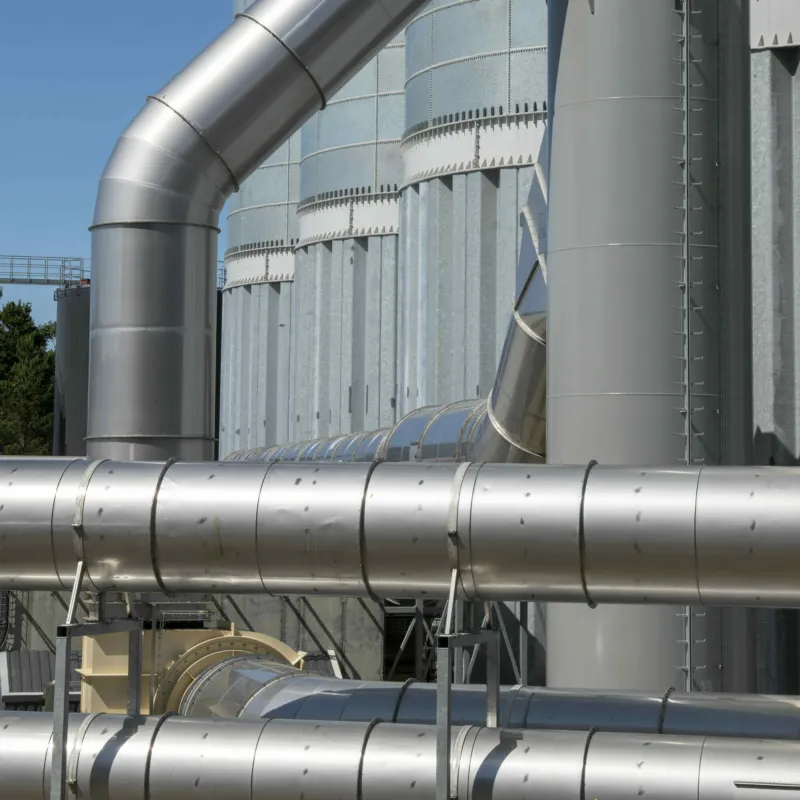The UK’s hidden infrastructure sector
Michelle Forbes, a project manager with Thomson Gray who specialises in the bereavement sector, tells us why the firm is uniquely positioned to support owners and operators of crematoria and cemeteries.
The UK’s bereavement sector is one of the critical but often overlooked elements of national infrastructure – coming way behind healthcare, education and housing in the public consciousness.
So much so that even local authorities, who are responsible for 70% of the crematoria and cemeteries, do not categorise them in the same way.

“Some councils place crematoria and cemeteries under community services, some under healthcare, and others put them under street works or green spaces,” says Michelle Forbes, a project manager at Thomson Gray with over 10 years’ experience in the sector.
One thing everyone does agree on is that it is a sector undergoing huge change. The last decade alone has seen a 20% increase in the number of new crematoria, as the profession copes with limited cemetery space and demographic shifts into under-served areas.
Many crematoria are also in need of refurbishment, and environmental legislation will soon require an increase in emissions abatement, meaning much of the equipment in the older crematoria will have to be substantially upgraded.
“The changes to the environmental guidelines on their own are going to affect around 25% of the current marketplace,” says Michelle, who joined Thomson Gray three years ago.
Now sitting at the centre of our bereavement operations, with over a dozen major crematorium refurbishments and option appraisals under her belt, Michelle is enthusiastic about the opportunity to help with the sector’s transformation – improving the existing estate of crematoria and cemeteries, and perhaps changing attitudes along the way.
It is something she is passionate about, both professionally and personally.
Project management role
The project manager’s role in this sector is an especially complex and demanding one, says Michelle, involving coordination with the bereavement manager, options appraisal and feasibility studies based on current technology, operational flow and long-term population forecasts.
Project managers also oversee the procurement of specialist cremation equipment and design teams. They coordinate multiple direct appointments and subcontractors, maintaining near-constant communication with all stakeholders. They also produce detailed budgets, right down to the car parking requirements.
“These projects are rare occurrences for each crematorium, and many bereavement managers will not have done it before. They are unlikely to understand the complexities or the coordination, where to even start with contracts or procurement,” she explains.
“All they’ll really know is that something needs to be done – and that’s where we consultants come in.”
Michelle’s career to date gives her a unique perspective. Starting out as a spatial designer for schools and the retail sector, she learned a lot about the importance of space and operational needs when it comes to movement and wayfinding.
She later worked in museums, where she honed her skills in organisation and operations, and then found her way into project management. From there she moved to the bereavement sector.
“Coming from a design background really helps. I understand the challenges they go through on a day-to-day basis – the environment, the manoeuvring required and the impact that has on workers. It gives you good insights.”

As a member of the Association for Project Management, she has, over the last decade, applied these insights to a wide variety of crematoria and other bereavement projects.
One crematorium refurbishment involved a listed building in the middle of a listed cemetery. Another required a complete overhaul: “Over 26 weeks, we took apart the entire building and then put it back together, extending it in three places. We also built the cremators on site.”
Yet another had a remit to strive for full inclusivity for neurodivergent people attending their services – an initiative Michelle is particularly passionate about.
Specific challenges of crematoria
Refurbishment
Refurbishment applies mainly to the publicly owned estate and presents specific challenges, says Michelle.
Existing crematoria are often in listed buildings, which requires navigation of planning laws and sometimes specialist asbestos removal – all grist to the mill for Thomson Gray’s heritage experts, she says, who have extensive experience in this area.
In addition, many of the buildings are simply too small to house the new emissions abatement technology and will require extension. This presents a number of access and other logistical challenges – not least when there are gravestones up against the walls of the building.
Furthermore, most bereavement managers will want to continue offering funeral services while the refurbishment is ongoing – a situation that requires extremely sensitive handling to minimise disruption, including night and weekend working and phased installation.
This is something Michelle feels strongly about getting right. “A funeral is a one-time thing and we must do our utmost to avoid disrupting a family's final goodbye to their loved one. But we can do it. We can provide a state-of-the-art facility and at the same time protect the sanctity of the funerals.”
New builds
New-builds are a little more straightforward, as you are not having to protect the funeral service. “You can effectively construct the building around the equipment,” says Michelle. “The project scope will include things like mains connections for utilities, transport infrastructure to support community access, and landscaping to create an appropriate environment for funeral services.”
Sustainability considerations
Sustainable solutions are key objectives in both types of project and Thomson Gray’s in-house expertise means this approach can be embedded right from the start.
“Our team will advise on all aspects of low-carbon, energy-efficient construction, such as carrying out whole-life carbon analyses, choosing the best materials, and providing dual-fuel alternatives to support what's new and emerging technologically.”
Thomson Gray’s multidisciplinary role
The multidisciplinary nature of the team at Thomson Gray means we can offer a comprehensive service, Michelle points out, with all the communication and teamwork advantages of working across a range of in-house departments.
In addition to project management, the firm offers quantity surveying, building surveying, principal designer/CDM expertise and construction quality management services.
“For the design team, such as the architectural and mechanical and electrical side of things, we have long-standing partnerships with a trusted design supply chain with all the relevant skills,” she says.
Future developments
Michelle is keeping a close eye on new developments in the sector where Thomson Gray’s expertise can support bereavement managers and operators.
In Scotland, for example, a change to legislation now allows for the introduction of alternative funerary methods, such as water cremation, which could be provided by funeral directors.
“It’s an eco-friendly alternative, with no emissions to air, and could be sited in city centres, although there will be strict regulations in place,” she says.
She is also exploring ways to contribute to cemetery development, mortuary projects and the repurposing of buildings in the public estate, such as chapels, churches and community spaces, for use in the bereavement sector.
Michelle Forbes will be attending Crematorium & Burial Communication & Education 2025 at the Utilita Bowl, Southampton, 23–25 June 2025.
For more information, please email or phone Michelle.

Thomson Gray is a member of the Institute of Cemetery and Crematorium Management.
Sign up for news
Receive email updates from Thomson Gray direct to your inbox:
- Subscribe to Practice News
- Subscribe to Market Outlook



